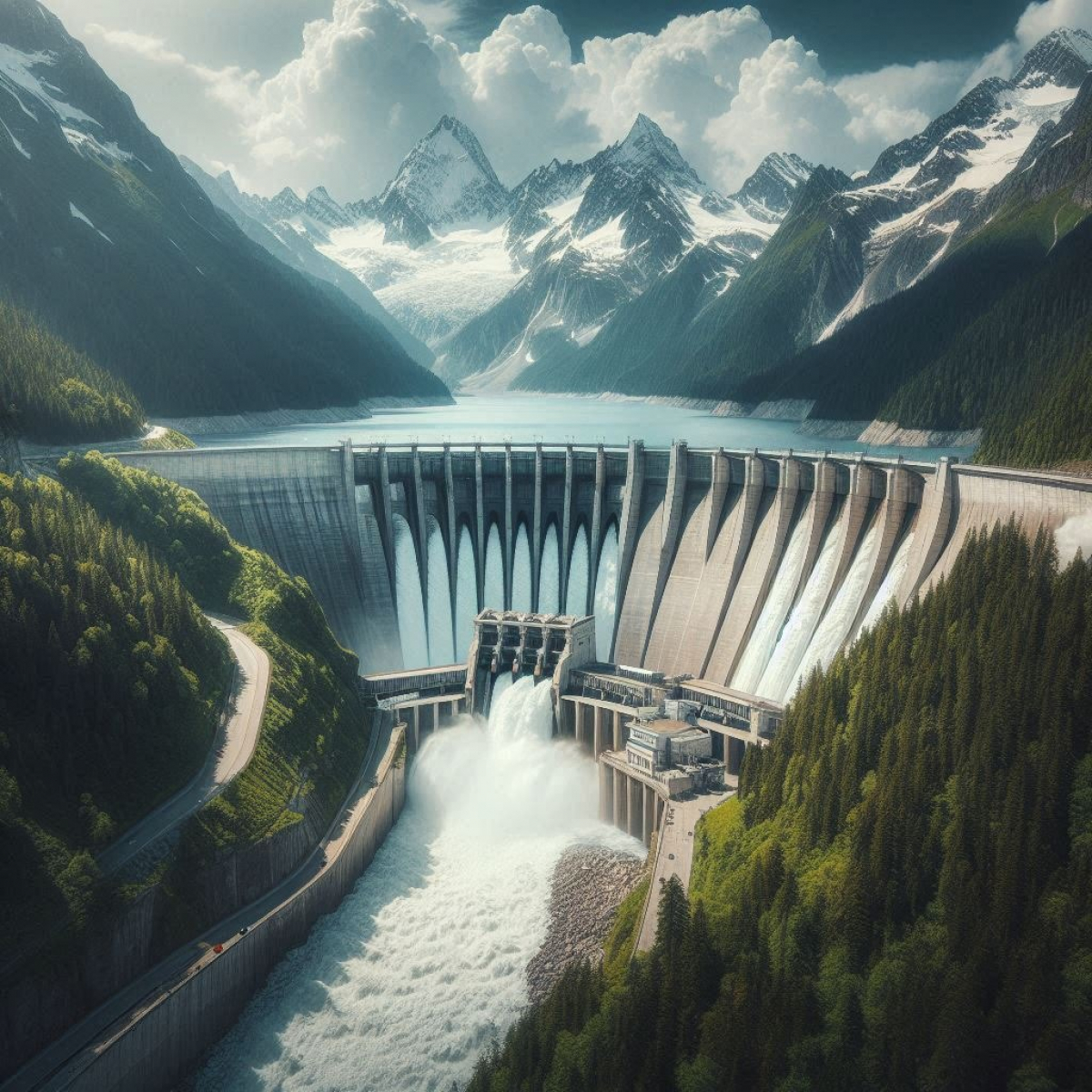Hydropower Law in Nepal:
The governing laws of hydropower law in Nepal are:
- Electricity Act, 1992 (2049) and Electricity Rules, 1993 (2050): It majorly overviews the licensing of electricity projects in the country.
- Electricity Regulatory Commission Act, 2017 (2074): It is established to oversee the effective management of production, transmission, distribution and trade of electricity.
- Nepal Electricity Authority Act, 1984: It governs the NEA (Nepal Electricity Authority) managing the power supply in the nation.
- Public-Private Partnership and Investment Act, 2019: It supervises hydropower projects with a capacity of more than 200 megawatts or an investment cost of more than $6 billion.
Hydropower Development Policy, 2058 (2001):
The laws and provisions regarding hydropower in Nepal are majorly provided in the Hydropower Development Policy, 2058 (2001). The major provisions given in the policy are:
- The policy emphasizes the importance of water resources for Nepal's economic development, as well as the potential for hydropower production, which has an estimated achievable capacity of 42,000 MW.
- It is dedicated to generate power at a cheap cost, provide reliable and high-quality electric service throughout Nepal at a reasonable price, and connect electrification to economic activity.
- An open and liberal policy has been implemented to encourage private sector involvement in hydropower development.
- The policy integrates legal measures such as the Environmental Protection Act and Rules (1997) and the Local Self Governance Act (1999), which emphasize the importance of environmental conservation in hydropower projects.
- The policy is intended to improve the hydropower development process by being clear, straightforward, transparent, and investor-friendly.
- Based on previous experiences and international market trends, the policy has been changed to make it more practical and investment-friendly.
Governing Authority of Hydropower in Nepal:
The major authorities that govern the hydropower in Nepal are:
- Department of Electricity Development (DOED): Regarding the electricity projects, DOED plays a central administrative role. It also has the authority to grant, amend, renew and revoke licenses for hydropower projects.
- Investment Board of Nepal (IBN): For the hydropower projects exceeding a capacity of 200 MW or investment more than 6 billion rupees, IBN has to provide the investment approval.
- Electricity Regulatory Commission (ERC): It oversees the production, distribution and trade of electricity.
Development of Hydropower in Nepal:
In Nepal, the standard hydroelectric project model is Build Own Operate, and Transfer (BOOT). There are typically three processes to building such projects:
- Licensing Route: This process includes obtaining a survey license for feasibility, and license based on project viability; generation, transmission or distribution under Section 3 of the Electricity Act.
- Direct Government Agreement: Through direct agreement with the Nepalese government, some entities can develop projects provided under the Section 35 of the Electricity Act.
- Competitive Bidding: Winning projects either through initial survey by government entities or when the licenses were declared valid previously involved in this process.
Licensing Period:
The survey license has a span of 5 years. However, the licenses regarding generation, transmission and distribution last up to 50 years. The common practice exists to grant generation licenses for 35 years, with extensions at the discretion of the Department of Electricity Development.
After the end of the license tenure, the project ownership transfers to the Government of Nepal where the initial developer still is able to operate the project, according to a new agreement. However, during the license term, the Nepalese government is not permitted to nationalize any land, building, equipment, or construction associated with the hydroelectric project ensuring hydropower project security.
Fiscal Incentives to Boost Investment:
Nepal has taken various fiscal incentives which boosts investment in the hydropower sector. The incentives include:
- Corporate Tax: There is 20% corporate tax for hydropower in Nepal.
- Income Tax Advantage: There is a provision for a full exemption for the first ten years and then a 50% cut for the next five years.
- VAT and Customs Benefits: There is a 0% VAT while importing machinery and equipment whereas a minimal 1% customs duty is applied to construction equipment imports.
- Financial Loss: Investors are able to forward losses for up to 12 years.
Power Distribution of Hydropower in Nepal:
Regarding the power distribution of hydropower in Nepal, the electricity generated can be sold domestically by connecting to the national grid or exported independently without using the national grid. However, in practice, the chief buyer of electricity is done by Nepal Electricity Authority (NEA). Electricity can be exported to a foreign country by signing an export agreement with the Nepalese government.
Foreign Investment in Hydropower Project:
Nepal welcomes foreign investment in the hydropower sector, which allows for up to 100% foreign investment. Local groups and the public sector have gradually gained ownership of hydropower projects. The foreign investment done in the hydropower project of Nepal are:
- Kaligandaki A Hydropower Project: Asian Development Bank (ADB) , Japan International Cooperation Agency (JICA) and the World Bank has invested in the project with the capacity of 144 MW.
- Middle Marsyangdi Hydropower Project: The project has been funded by the German development bank KfW with the capacity of 70 MW.
- Kulekhani Hydropower Project: The World Bank, Japan, and Kuwait has invested in the project which has a capacity of 92 MW.
- Upper Tamakoshi Hydropower Project: It was primarily funded locally with capacity of 456 MW.
- Upper Trishuli 3A: It is a 60 MW project with Chinese investment.
- Upper Marsyangdi: It has a capacity of 50 MW, also with Chinese investment.
- Chameliya Hydropower Project: With a capacity of 30 MW, it has received investment from South Korea.
Conclusion:
In Nepal, where hydropower is an important component of the national energy strategy, a strong hydropower law is critical for utilizing the country's tremendous hydropower potential in a way that promotes sustainable development.



